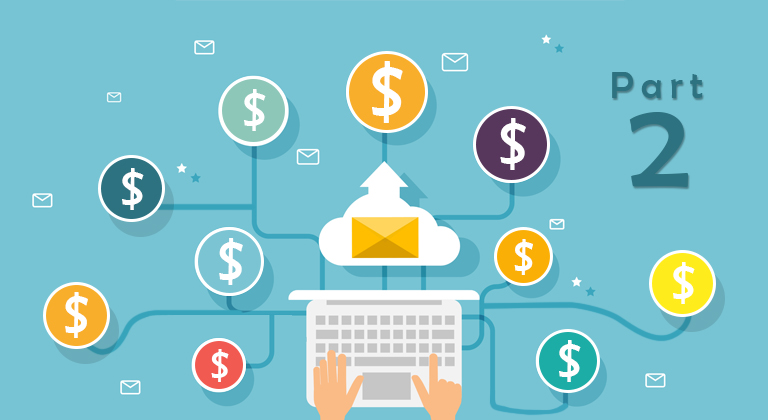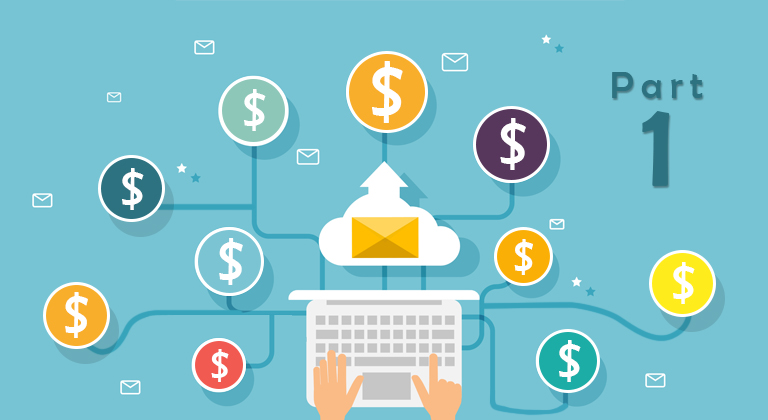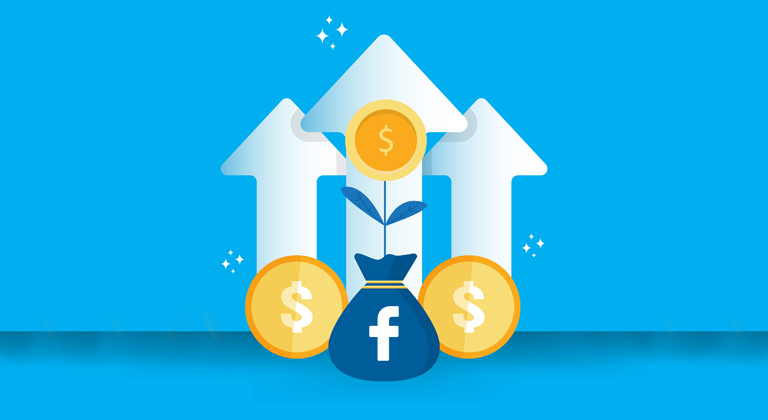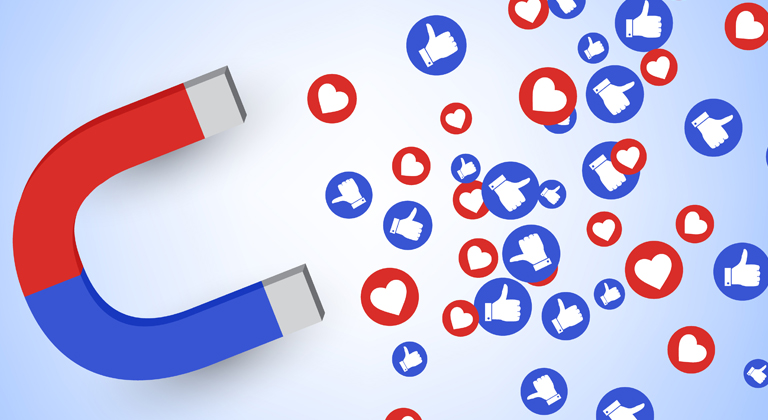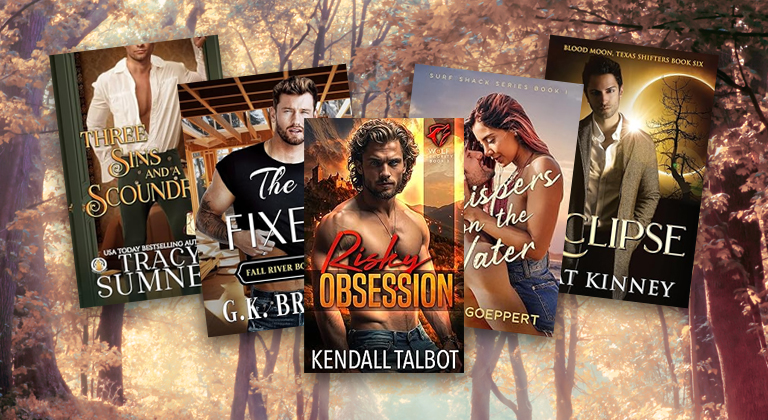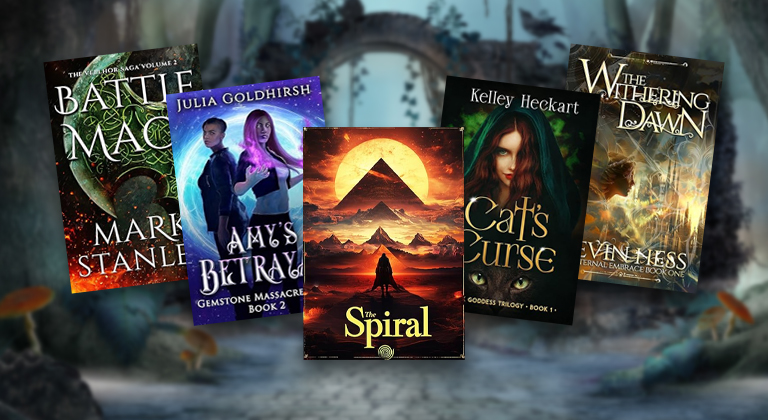Learning Tough Lessons from Direct Sales: Part 2
Last week, Ginger gave us an update on his direct sales journey, where he’s been selling his novels directly to readers instead of relying solely on the big online eBook retailers. In that post, he shared how a couple of minor hiccups slowed his momentum but were manageable enough for him to recover quickly. His final challenge, however, proved to be more substantial, ultimately warranting a post of its own.
Today, Ginger goes into the details on how his overconfidence and impatience led him down a costly path, consuming more time and money than his first two missteps combined. Yet, his experiment provided valuable lessons, which he’s now sharing to help the rest of us avoid similar pitfalls when we consider building our own direct sales machine.
Last week, I started an update about my adventures in direct sales. I started selling my eBooks directly to readers back in May of this year (you can read about it here) but the decision to replace Amazon as my primary retailer has definitely been more of a journey than a destination – and not always a smooth one!
I gave an overview of two potholes I’d stumbled across in the road last week – but both of those problems I quickly overcame. The third pothole I spoke about was a little more problematic, and I thought it was worth dedicating an entire blog post to.
In Last Week’s Episode…
You can read Part One of this article here, but if you want the crib notes, I’ll quickly recap the basics. Essentially, I’d been doing very nicely selling my books to readers via my own personal Shopify store, but things got a little tricky when I ran into a problem with my SSL certificate (without which I was directing potential customers to a big, red warning that “this site is unsafe.”)
By the time I’d fixed that problem, I’d created another by chowing through my entire advertising budget while unable to make any sales. That put a hiatus on advertising until I’d hustled enough to pay all my bills – but afterward, I was back in business.
My ads continued, I still made sales, and I continued to make enough profit to at least cover all the additional expenses I was incurring by selling eBooks directly instead of using a platform like Amazon.
But then I ran into my third pothole – and this one was a biggie. It was less of a pothole and more of a sinkhole – one that hypothetically I could have accidentally sunk my entire direct sales empire into if I hadn’t been more careful.
The problem was that I got creative…
The BIG Pothole: Selling a Product Nobody Buys
So, flash back a few weeks and you’ll find me just about recovered from my experiences breaking Shopify. My ads continued to run, I continued to make a profit, yet I’d also learned some tough lessons about how quickly things can go south if you’re not paying attention to the performance of all the elements of your sales funnel.
Now, a sensible person might have been humbled by these experiences and taken things slowly as they got their direct sales machine operating again. Unfortunately, I’ve never been very sensible, and I decided to double-down on my mistakes with a wild and crazy moonshot which ultimately exploded before it left the atmosphere.
Or, to put it more simply, I built a second direct sales machine – and it failed.
Why make one mistake when you can make two?
I’ve been in the self-publishing game for just over a decade now, and I’ve experienced dizzying highs and catastrophic lows. At my height, I was making $14,000 a month in royalties. At my worst, I was struggling to see even a few sales trickle in each day. The light shining at the end of the tunnel, however, was the knowledge that I was always making progress.
But the two recent problems I ran into with direct sales set me back. I’d spent months getting my sales funnel churning at a respectable rate, and after breaking Shopify and blowing through my advertising budget, I realized I’d probably have to spend a lot of time and money getting back to where I’d been before those problems happened – and I wondered if there was a quicker way to catch up.
And I discovered one! In theory, at least…
As I worked on recovering from the two minor potholes I’d run over, I looked at my back catalog of books and came up with a wildly ambitious plan: Maybe I could build a second sales funnel and start selling a separate series of books that I’d previously only published on Amazon.
I’d entered the self-publishing industry by writing and publishing erotic short stories and despite hanging up my smutty apron a number of years ago, these shorts continued to make me enough money every month to keep me in Stella Artois and MeowMix for the foreseeable future.
I figured: “What if I applied the same direct sales tactics to these stories, as well?”
In theory, I could produce another sales funnel that also produced a profit – giving me an opportunity to catch up on the ground I’d lost twice as quickly. I knew these books still sold. I knew there was an audience for them. It seemed like a no-brainer (and in some ways, it was – except the opposite of what I’d imagined it would be.)
Confident in this decision, I got to work. The result was a week of frantic editing, writing, designing, and coding as I built a second, entirely independent sales funnel for these smutty shorts. I used everything I’d learned from my first sales funnel and the end result was, in my own humble opinion, absolutely beautiful. I built out a new Shopify store. I uploaded my smutty shorts to BookFunnel. Then, I designed a series of ads that masterfully coded the saucy subject matter of my short stories into language and images that Facebook would accept as “family friendly” and clicked “go!”
And what happened next?
It failed. Spectacularly.
Actually, that’s not entirely accurate. The advertising part of it worked beautifully. In fact, I managed to massively outperform the metrics of my previous sales funnel with this new one. I was reaching a bigger audience for less money, and they were clicking through in droves to my new landing page. Clearly, I spoke the language of the naughty boys and girls who liked the niche of my saucy stories and they reacted accordingly.
But while tons of people went to check out my saucy short stories, I had a problem:
Nobody bought them.
I didn’t get a single click on the “buy now” button of my sales funnel, despite the awesome performance of the ads and the beautiful landing page I’d designed. Just like when I broke my Shopify store earlier, I plowed through days and days of advertising at $50 a day before I finally accepted the inevitable:
It wasn’t going to work.
I hadn’t done anything wrong. I hadn’t broken anything. People just didn’t want to buy my books – at least not in the package I was offering them.
Perhaps that would have changed if I’d kept on advertising, but I couldn’t be sure – and even if I had started to make sales, the evidence suggested that this probably wasn’t going to be a profitable way to sell books anytime soon.
I knew this because I’d tried my hand at building sales funnels before – and even then, I’d at least managed to score one or two sales out of the hundreds of clicks I’d paid for. The fact that I hadn’t got any at this point made me think that making my second sales funnel profitable was going to be a lot of hard work – perhaps more than I was willing to put into it.
There are lots of reasons why this second funnel failed to work as well as my first one. Perhaps Facebook wasn’t the place people wanted to buy their saucy short stories. Perhaps they preferred buying them one-at-a-time on Amazon, rather than as a big bundle. Maybe my landing page just wasn’t attractive enough for them to take a chance on my erotica.
In any event, I cut the cord on this project rather than lose any more money, and have since decided to focus my attention back on increasing the margin of the already profitable sales funnel I’d built first.
But while that sounds like a complete failure, ultimately I learned a lot from the experience. Perhaps even enough to cover the money I’d lost advertising these seemingly unsellable books.
Lessons Learned
One thing I realized when I pulled the plug on the second sales funnel was that I probably wasn’t the first author to go through this experience. In fact, I think spectacular failure might be the very first thing most authors encounter when they first dip their toe into direct sales.
That was true for me, at least! As I’ve mentioned, a couple of years ago I’d tried to cobble together a working sales funnel by reverse-engineering the websites of other successful authors and I’d quickly realized that there is a lot more involved than just “if you build it, they will come.”
I’d had to figure out where to host and how to build a website. I’d had to find a sales platform to accept payments. Then, I’d had to find a way to deliver the ebooks once people had bought them. It was a lot to come up with out of thin air.
Eventually, after I’d given up trying to figure it all out myself and finally invested in a course about ecommerce and selling books directly, I realized I’d probably made the right decision to quit while I’d been behind.
In these early attempts at designing a sales funnel, I’d made tons of clumsy mistakes that really hurt my chances of ever making my cobbled-together website sell my books at a profit – and even after I’d learned to build a sales funnel the “right” way, I realized I’d been incredibly lucky to hit profitability the moment I switched it on. That’s very far from normal!
Normally, it takes quite a while for authors to figure out how to make their funnel generate sales even if they’ve designed it “properly” – and even longer to lure enough customers in to make it profitable. An author’s first sale can often be both triumphant and despondent – an example of how the machine you’ve built functions, but also a demonstration of how much more work needs to go into it before it starts making money.
It ain’t easy
Most authors will invariably lose a lot of money before they start consistently making it back through direct sales. That’s the nature of ecommerce.
Authors will have to experiment, optimize, and tweak things incessantly before they finally get their sales funnel into the black – and in the early days, it might seem that instead of investing in advertising to turn a profit, you’re often investing just to get enough data to figure out what changes to make.
But that’s not a reason to abandon the idea of direct sales as quickly as I did with my second sales funnel. All businesses lose money at first, and success is often only determined by those ambitious enough (or dumb enough) to stick at it until they eventually turn a profit.
In theory, that’s exactly what I could have done with this second sales funnel I’d built. If I’d continued tweaking and updating my landing page, and poured more money into advertising, I might have eventually made it profitable – but I had an advantage most authors don’t have:
I didn’t need to.
I ultimately gave up on this second sales funnel because I didn’t need to invest more time and money into selling smutty stories I was lowkey ashamed of. Instead, I could just refocus back on selling my romance novels instead. After all, that sales funnel was already profitable and I’d probably end up making more money by improving it than I would by trying to get my failing sales funnel to generate an income in the first place.
But most authors don’t have that luxury. The first direct sales funnel they build normally points to their best and most marketable books, so they don’t have a fallback position like I did. When they build out their first sales funnel and it fails to make a profit, they’ve got no choice but to put in the work until it does – or make the tough decision to pull the plug on the project entirely.
But in building out my failing direct sales funnel, I at least managed to identify some of the things authors should consider before deciding whether or not direct sales is right for them.
Should you stick it out, or pull the plug?
If I could go back in time, the first thing I’d do…
(after killing Hitler, attending Woodstock, and buying all the Amazon stock I could on May 22, 1997)
…would be to tell myself to hold off on building this shiny second sales funnel until I’d actually thought it out a little more. With the benefit of hindsight, there were some things I should have considered that might have changed my mind about investing all that time and money in the first place.
Perhaps the lessons I learned will help you avoid making the same mistakes.
Lesson #1: Consider my audience
The first question I’d ask myself would be whether or not Facebook was the right place to find my ideal readers in the first place.
Now, you might think it would be. After all, it’s definitely the best place to advertise most fiction books. Hell, romance practically lives on Facebook, and a lot of authors build healthy audiences for their thrillers, mysteries, sci-fi, and fantasy books as well.
But remember, I was advertising raunchy short stories – the kind you probably wouldn’t want your parents, coworkers, and friends from school to know you’re reading. While my ads got plenty of clicks, I don’t think Facebook is where people want to be offered explicit erotica stories – and I don’t think my author page was one respectable school teachers, lawyers, or office workers would want to openly “like” to their friends list. If I’d thought things through a little more, this might have convinced me not to start this project altogether.
Lesson #2: Consider my offer
I’ve been selling erotica shorts for over a decade, and therefore I know there’s a voracious appetite for them. However, they’re mostly sold individually. On Amazon, readers like the premise of an individual story (a housewife having a torrid encounter with her personal trainer, for example) and then happily pay $2.99 or click to read it with Kindle Unlimited.
However, to make money in direct sales, you need to sell more than individual stories at $2.99. The real money is to be made in bundles, and that’s not necessarily the best match for the audiences you find on Facebook.
Now, don’t get me wrong. Facebook readers LOVE bundles of full-length novels. I make my profit on my first direct sales funnel with a 6-book bundle of romance novels and that does beautifully. However, buying a series of six full-length, interconnected romance novels is different from a bundle of disjointed, unconnected erotica stories. It’s not that the idea is completely absurd (my best-selling erotica book on Amazon is a collection of ten stories, for example) but it’s a much tougher sell on Facebook than a series of “proper” novels.
I think there’s definitely an audience willing to throw down $20 for a bundle of steamy short stories – but I think they’re more likely to be found on Reddit, Twitter, or another less public platform.
Step #3: Consider the work involved
You’ve probably heard of the 80/20 rule. That’s the idea that 20% of your effort results in 80% of your results. Successful entrepreneurs try to do more of that 20% and cut out as much of the 80% as possible.
In this instance, I already had a successful direct sales platform that required around 20% of my time and effort to monitor and optimize. I was wasting 80% of my effort (and my advertising budget) building a direct sales platform that ended up bringing in nothing. In retrospect, this was clearly not the smartest use of my time or effort, so I would have been better off focusing on what was working well instead of embarking on something unknown.
You should consider this as well. Will the potential payoff from building a direct sales funnel outweigh the time, effort, and money you invest in it? Or could you spend all those resources elsewhere and get more bang for your buck?
Amazon has its flaws, but it does make self-publishing easy – and it’s free. It offers a sales platform people trust, and a way to build social proof through reviews. Until you know for sure that your direct sales funnel can make your books more appealing than Amazon does, you should leave them in Jeff Bezos’s hands and invest that time and effort writing more books.
This is especially relevant when it comes to the final point I should have considered:
Step #4: Are your books even ready for direct sales?
When it comes to the decision of whether or not to experiment with direct sales, this is really the decider. Do you have an offering that could work profitably with direct sales?
My first sales funnel marketed my romance novels – twelve full length books that have thousands of reviews and can be sold in a bundle that brings in plenty of money for me, yet also provides plenty of value for the customer.
My erotica, on the other hand, is an unknown animal. Unsurprisingly, readers don’t tend to leave reviews for steamy short stories about cheating housewives and submissive husbands, so my offering immediately lacks the social proof that helps sell my romance novels.
Likewise, my romance novels retail at $5.99 each, whereas my short stories sell on Amazon for $2.99 and I was discounting them heavily to sell them directly. This ends up providing readers with a lot less perceived value, making the offer less attractive even as part of a bundle.
On Amazon itself, these problems tend to take care of themselves. I do have a few hundred reviews for these short stories, and until I took them out of it, they used to be available for “free” on Kindle Unlimited. Therefore they’re a pretty attractive offer for readers on Amazon, but less so for readers on Facebook. You might want to examine your own books with the same lens.
Do you have a big enough book series to sell them as a bundle? If you’ve got fewer than four or five books, probably not. Do you have a ton of reviews to endorse them? If not, you probably want to keep marketing them on Amazon to help build up that social proof first.
Think about your catalog of books dispassionately and it should be pretty obvious whether or not you should sell them directly. It was for me, at least in retrospect.
I had tons of erotica books on Amazon. They continued to sell well enough there even without any marketing. I really should have just kept them on Amazon and focused my attention elsewhere. After reading this, maybe you’ll think the same about your books. If so, I just saved you a lot of time, effort, and frustration.
But if you think direct sales might work for you – well, these tough questions should hopefully make you more confident about that than you were before.
Conclusion
When you start selling your books directly, you might end up experiencing the same problems I did with my second sales funnel. That doesn’t mean you should give up, though.
It does mean that you should appraise what you’re trying to sell with a critical eye, however. Does your sales funnel need to be optimized to hit profitability? Or would you end up being more successful by sticking to a more traditional marketing strategy and continuing to sell your books on Amazon?
Sometimes, like in my case, you won’t know the answer to that until it’s too late – but you might find that failure to be a much more valuable teacher than success could ever be. In my case, having built a failing sales funnel off the back of a profitable one, that was literally true!
So, learn from my mistakes and don’t assume direct sales will fix all your book sale woes – but likewise, don’t be afraid of the hard work ahead of you if you do decide to give direct sales a try. As long as you approach the project with some degree of confidence, you might find it ultimately works out better than expected.


